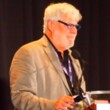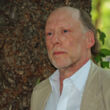1969: the year everything changed
Description
More Details
Table of Contents
From the Book
Similar Titles From NoveList
Similar Authors From NoveList
Published Reviews
Choice Review
Chronicling the year 1969, this book is an eminently readable account of US society at the time. Kirkpatrick first acknowledges the glut of books about 1968, and then wonders about the dearth of studies on the year that followed, considering its historical significance. In all manner of ways, 1969 was like the other side of a turning point, when changes truly started to manifest. Richard Nixon helped usher in the decline of liberalism with his Silent Majority speech. He also expanded the war in Vietnam, despite the lesson many took from the Tet Offensive that the war was already lost. Meanwhile, the New Left gave birth to the Weathermen, which rejected nonviolence for bombings that would "bring the war home." The ideas of Black Power spread in the face of an FBI effort to destroy its various forms. And music evolved, drawing on so much of "what was in the air" with the first heavy metal and punk sounds. Kirkpatrick traces these and many other changes in a clear, engaging style and interweaves excerpts from primary sources. Summing Up: Recommended. General, undergraduate, and public libraries. C. Montrie University of Massachusetts Lowell
Booklist Review
Lamenting all the attention 1968 has gotten with assassinations and riots, Kirkpatrick argues that the following year was more than a little significant, too. Beginning with a selected timeline, Kirkpatrick goes on to chronicle a dizzying array of major events: Richard Nixon's election in November 1968 as president; the covert bombing of Cambodia; Apollo 11 landing on the moon; student antiwar protests from Harvard to Berkeley; disclosure of the My Lai massacre; the sexual revolution manifested on stage, in literature and movies, and at outdoor festivals; startling innovations in the music world; the days of rage protest kicked off during the 1968 Democratic Convention in Chicago; the first message sent via the ARPANET, precursor of the Internet. Kirkpatrick asserts that 1969 was the birth of modern America and sets out to relate how this incredible year reflected deep underlying changes in American culture. The book is divided into four parts that roughly outline the year, including sexual revolutions of springtime and the apocalyptic standoffs at year's end. A riveting look at a pivotal year.--Bush, Vanessa Copyright 2009 Booklist
Library Journal Review
In this compelling and freewheeling account, Kirkpatrick (The Words and Music of Bruce Springsteen) treats the tumultuous events of 1969 with the skills of a journalist, a historian, a sociologist, and a sportswriter and manages to insert moments of lightness and triviality into his grand tour. He writes as easily about jazz-pop as about the rise of the American Indian Movement. He follows a harrowing chapter about the Manson family and the Zodiac Killer with a breathless report on the Amazin' Mets. Later, he describes the surreal convergence of Game 4 of the World Series with the National Moratorium Day against the Vietnam War. In Kirkpatrick's account, Joe Namath receives more attention than Spiro Agnew. This is not a definitive, scholarly study of the year's events, but it serves well as a primer on the condition of American life at the end of the 1960s. In addition to over 500 endnotes, Kirkpatrick provides a handy time line of the year's significant events. Nostalgic for some, revelatory for others, this is a worthy addition to the literature of the 1960s.-Thomas A. Karel, Franklin & Marshall Coll. Lib., Lancaster, PA (c) Copyright 2010. Library Journals LLC, a wholly owned subsidiary of Media Source, Inc. No redistribution permitted.
Booklist Reviews
Lamenting all the attention 1968 has gotten with assassinations and riots, Kirkpatrick argues that the following year was more than a little significant, too. Beginning with a "selected timeline," Kirkpatrick goes on to chronicle a dizzying array of major events: Richard Nixon s election in November 1968 as president; the covert bombing of Cambodia; Apollo 11 landing on the moon; student antiwar protests from Harvard to Berkeley; disclosure of the My Lai massacre; the sexual revolution manifested on stage, in literature and movies, and at outdoor festivals; startling innovations in the music world; the "days of rage" protest kicked off during the 1968 Democratic Convention in Chicago; the first message sent via the ARPANET, precursor of the Internet. Kirkpatrick asserts that 1969 was the birth of modern America and sets out to relate how this incredible year reflected deep underlying changes in American culture. The book is divided into four parts that roughly outline the year, including "sexual revolutions of springtime" and "the apocalyptic standoffs at year s end." A riveting look at a pivotal year.
Library Journal Reviews
In this compelling and freewheeling account, Kirkpatrick (The Words and Music of Bruce Springsteen) treats the tumultuous events of 1969 with the skills of a journalist, a historian, a sociologist, and a sportswriter and manages to insert moments of lightness and triviality into his grand tour. He writes as easily about jazz-pop as about the rise of the American Indian Movement. He follows a harrowing chapter about the Manson family and the Zodiac Killer with a breathless report on the Amazin' Mets. Later, he describes the surreal convergence of Game 4 of the World Series with the National Moratorium Day against the Vietnam War. In Kirkpatrick's account, Joe Namath receives more attention than Spiro Agnew. This is not a definitive, scholarly study of the year's events, but it serves well as a primer on the condition of American life at the end of the 1960s. In addition to over 500 endnotes, Kirkpatrick provides a handy time line of the year's significant events. Nostalgic for some, revelatory for others, this is a worthy addition to the literature of the 1960s.—Thomas A. Karel, Franklin & Marshall Coll. Lib., Lancaster, PA
[Page 80]. Copyright 2009 Reed Business Information.





























